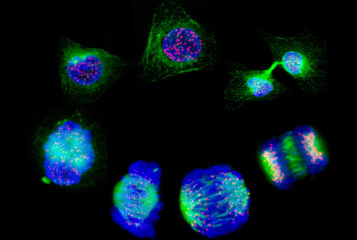The World Health Organization (WHO) is convening an 18-member committee of scientific experts from around the globe next month with the goal of developing international standards for the oversight of human genome editing.
According to the WHO's official announcement made last week, the committee will 'examine the scientific, ethical, social and legal challenges associated with human genome editing'. The committee plans to have its first meeting in Geneva in March with the aim of reviewing the current landscape of genetic research.
The committee will be overseen by co-chairs Justice Edwin Cameron, a prominent human rights lawyer and justice of South Africa's Constitutional Court, and Dr Margaret Hamburg, foreign secretary of the US National Academy of Medicine. The committee membership itself comprises of an international coalition of medical doctors, biomedical researchers, human rights lawyers and bioethicists, including Professor Robin Lovell-Badge, chair of trustees of Progress Educational Trust, which publishes BioNews.
The WHO's decision is thought to be motivated largely by a recent controversy in China, where Chinese researcher Dr He Jiankui stunned the global scientific community with his announcement that he had used CRISPR/Cas9 genome editing technology to create the world's first genetically modified human children.
Dr He revealed the birth of the twin girls last year ahead of a major genome editing conference in Hong Kong, describing how he and his colleagues had used CRISPR/Cas9 genome editing in human embryos to remove a gene called CCR5, with the aim of producing 'HIV-resistant infants' (see BioNews 977).
Dr He's announcement was met with widespread outrage by many who considered the experiments poorly performed and unethical.
Additional developments have only added to the furore, as it has also been announced by Chinese media outlets that Dr He may have committed further ethical breaches, including the forging of ethical review documents.
The WHO hopes to reduce the chance of such incidents occurring in the future with the formation of the new committee, with the aim to 'advise and make recommendations on appropriate governance mechanisms for human genome editing'.
Sources and References
-
WHO expert advisory committee on Developing global standards for governance and oversight of Human Genome editing
-
Hamburg to co-chair WHO human genome editing committee
-
WHO appoints expert panel on gene editing after world's first baby claim
-
World Health Organization Forms Committee To Guide Editing Of Human Genes






Leave a Reply
You must be logged in to post a comment.